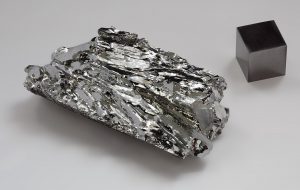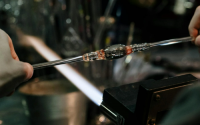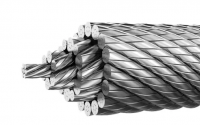Exploring the Benefits of Molybdenum’s High Melting Point
Molybdenum is a refractory metal with unique physical and chemical properties, which makes it a valuable material for various industries. One of the standout properties of molybdenum is its extremely high melting point – 4753°F (2623°C), one of the highest among other metals. This characteristic makes it an ideal metal for use in a wide range of high-temperature applications.

Advantages and Applications
The aerospace industry is one of the major users of molybdenum due to its ability to withstand extreme temperatures. It is used in the production of aircraft engines, where it plays a critical role in maintaining durability under high temperatures and maintaining structural integrity. Molybdenum’s heat resistance and high strength make it ideal for components such as turbine blades and exhaust systems.
In the defense industry, molybdenum’s high melting point and strength make it a popular choice for critical components such as missile parts.
The furnace industry also relies heavily on molybdenum’s high melting point. Molybdenum has several applications in this industry, including as heating elements and crucibles. In addition to its heat resistance, molybdenum’s durability makes it an excellent choice for these high-temperature components. The properties of molybdenum allow it to resist thermal shock, making it ideal for use in furnaces that are subject to rapid temperature changes.
Molybdenum is also commonly used as a welding electrode due to its high melting point and strength. It is an essential material in the welding of exotic metals such as titanium, nickel, and stainless steel. The advantage of using molybdenum electrodes is that they can withstand high temperatures without melting or degrading, making it easier to form high-quality welds on complex materials.
Disadvantages and Challenges
Despite its many advantages, working with molybdenum at high temperatures presents significant challenges. One of the primary concerns is the oxidation of molybdenum at high temperatures, which leads to brittleness and a shortened lifespan. Another challenge is that molybdenum can react with certain materials, such as ceramics or metals, during high-temperature processes. This can lead to unwanted compounds, compromising the integrity of the material and causing it to break down over time.
To address these challenges, researchers continue to develop new techniques for processing molybdenum at high temperatures. One of the most promising developments is the creation of molybdenum alloys that can withstand even higher temperatures than conventional molybdenum. Additionally, advanced coatings and surface treatments are being developed to protect molybdenum from oxidation and chemical reactions. Researchers are also exploring innovative ways to utilize molybdenum, such as creating molybdenum-based ceramics through reaction sintering, which are highly resistant to chemical degradation and ideal for use in harsh environments.
Conclusion
In conclusion, molybdenum’s unique physical and chemical properties make it an essential material for various industries. It is valued for its high melting point, which makes it an ideal choice for high-temperature applications in the aerospace, defense, and furnace industries. Despite the challenges associated with working with molybdenum at high temperatures, ongoing research and development efforts continue to explore innovative ways to harness its potential while addressing issues that arise during its manufacture and use.
For more information about molybdenum materials, please visit https://www.samaterials.com/6-molybdenum.html.



